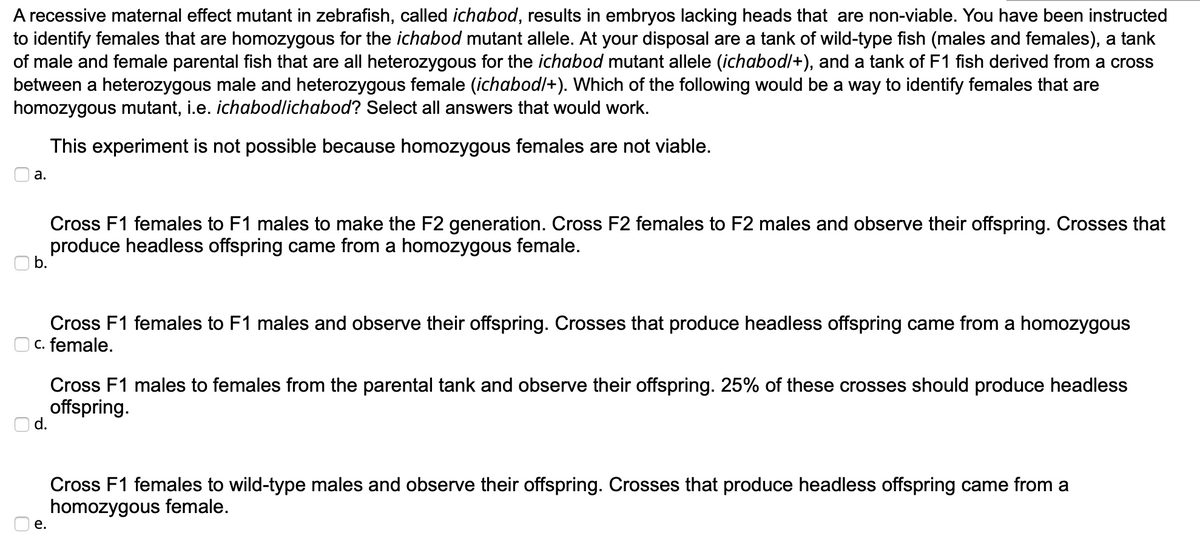A recessive maternal effect mutant in zebrafish, called ichabod, results in embryos lacking heads that are non-viable. You have been instructed to identify females that are homozygous for the ichabod mutant allele. At your disposal are a tank of wild-type fish (males and females), a tank of male and female parental fish that are all heterozygous for the ichabod mutant allele (ichabodl+), and a tank of F1 fish derived from a cross between a heterozygous male and heterozygous female (ichabodl+). Which of the following would be a way to identify females that are homozygous mutant, i.e. ichabodlichabod? Select all answers that would work. This experiment is not possible because homozygous females are not viable. O a. Cross F1 females to F1 males to make the F2 generation. Cross F2 females to F2 males and observe their offspring. Crosses that produce headless offspring came from a homozygous female. O b. Cross F1 females to F1 males and observe their offspring. Crosses that produce headless offspring came from a homozygous O c. female. Cross F1 males to females from the parental tank and observe their offspring. 25% of these crosses should produce headless offspring. Od. Cross F1 females to wild-type males and observe their offspring. Crosses that produce headless offspring came from a homozygous female. O e.
A recessive maternal effect mutant in zebrafish, called ichabod, results in embryos lacking heads that are non-viable. You have been instructed to identify females that are homozygous for the ichabod mutant allele. At your disposal are a tank of wild-type fish (males and females), a tank of male and female parental fish that are all heterozygous for the ichabod mutant allele (ichabod/+), and a tank of F1 fish derived from a cross between a heterozygous male and heterozygous female (ichabod/+). Which of the following would be a way to identify females that are homozygous mutant, i.e. ichabod/ichabod? Select all answers that would work.

Maternal effect in zebrafish is a situation where the phenotype of an organism is determined not only by the environment it experiences and its genotype, but also by the environment and genotype of its mother.
Trending now
This is a popular solution!
Step by step
Solved in 2 steps


